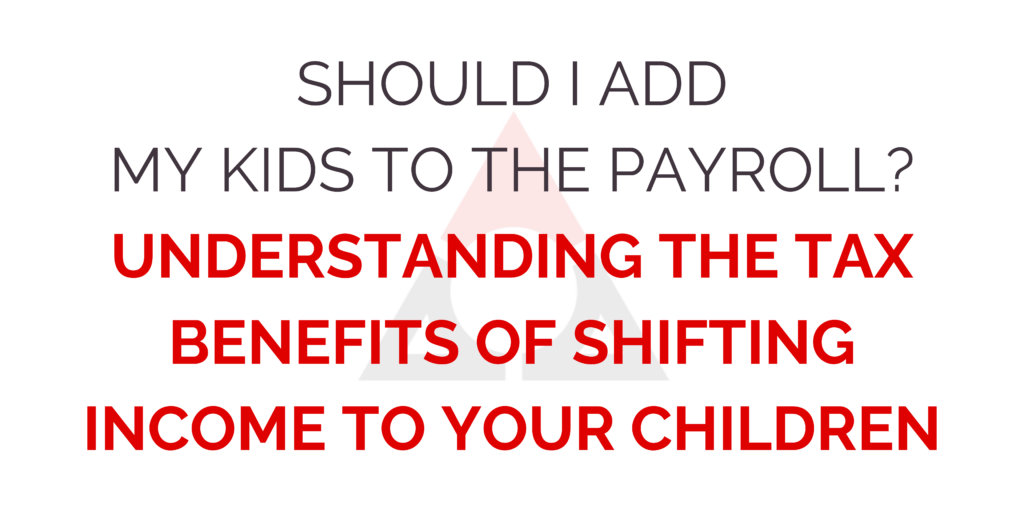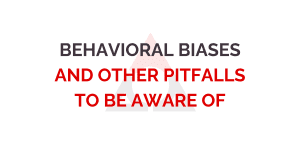If you are a business owner in one of the top tax brackets, adding your kids to the payroll can be a great tax move that shifts income from your tax bracket down to your child’s bracket – which in many cases can be a 0% rate as we will explore further in this post. The benefit provided by this move will be influenced by a few factors – your tax rate, how much you pay your child, what other income they earn, and the entity structure of your business. We will finish this piece by reviewing some savvy moves to make once you have paid your child to optimize the long term value of the funds.
Standard Deduction
To start, let’s review the standard deduction – this is the amount that every wage earner get’s to deduct from their income in a given year. As a single tax filer in 2024, the standard deduction is $14,600. This means as long as your child makes below that amount they will be in the 0% tax bracket and not owe any income taxes on the wages they earn for the year.
Payroll Tax Deduction
Generally speaking, whenever you pay an employee you are required to also pay the employer portion of payroll tax and the recipient is required to pay the employee side. There are two components of this payroll tax, Social Security at 6.2% per side and Medicare at 1.45% per side, for a total of 15.3% of wages paid.
If you operate an LLC taxed as a disregarded entity or partnership and are the only owner of the business or a sole-proprietorship, the IRS makes an exception waiving the payroll tax if you pay your child any amount up to the standard deduction. This means in 2024, a business owner of a qualifying business could pay their child $14,600 and not have any payroll taxes applied – a savings of $2,233.80.
If you operate an S Corp or a C corp, your child’s pay will be subject to payroll taxes. There are advanced strategies such as setting up a family management company that is an LLC or sole proprietorship that you pay legitimate fees to but you will want to consult a tax advisor before implementing to complete a cost benefit analysis and ensure things are structured properly.
Employment of your Child
It is important to note that your child must be a legitimate employee of the business in order to pay them. The work should be ordinary and necessary for the business and you must pay them a reasonable amount based on services that were actually performed. It is a good practice to keep track of hours worked and services completed that can be used to justify pay should an audit occur.
Minor Roth IRA
The pay that your child receives will be eligible to be contributed to a Roth IRA up to the limit for a given year. In 2024, that means your child can contribute the lesser of their income or $7,000 to their Roth IRA. This strategy takes the potentially tax free funds they were paid and makes it tax free forever assuming they meet the IRS holding requirements and do not take the funds before age 59.5.
Example: To tie it all together, let’s take business owner Sally who has 16 year old triplets – Sam, Scott, and Susie. As a successful business owner, Sally is in the top tax bracket of 37%. She hires her three children to perform work for her business and pays each of them $14,600.
As an LLC, her business qualifies for no payroll tax requirement on the pay meaning her children will owe no taxes on the income they are paid. By shifting the $43,800 to her children’s bracket, this saves $16,206 in income taxes. Because this pay is not subject to payroll taxes, this also avoids $6,701.40 in payroll tax deductions.
Sally decides to set up Minor Roth IRA’s for her kids and contribute the maximum allowable amount of $7,000 each year until they turn 18 meaning each child invests a total of $21,000. If her children never save another dollar into their Roth IRA’s and are able to achieve an average annual return of 8% per year they would have approximately $781,000 of tax free money by the time they reach age 65.
The children can then use the remaining funds that they are paid to cover expenses that they have such as buying a car, electronics, or education related expenses that Sally may have otherwise had to pay.
Disclosure: This is a hypothetical example for illustration purposes only and does not represent an actual investment. Keep in mind that there is no assurance that any strategy will ultimately be successful or profitable nor protect against a loss. Please note, changes in tax laws may occur at any time and could have a substantial impact upon each person’s situation. While we are familiar with the tax provisions of the issues presented herein, as Financial Advisors of RJFS, we are not qualified to render advice on tax matters. You should discuss tax matters with the appropriate professional.




